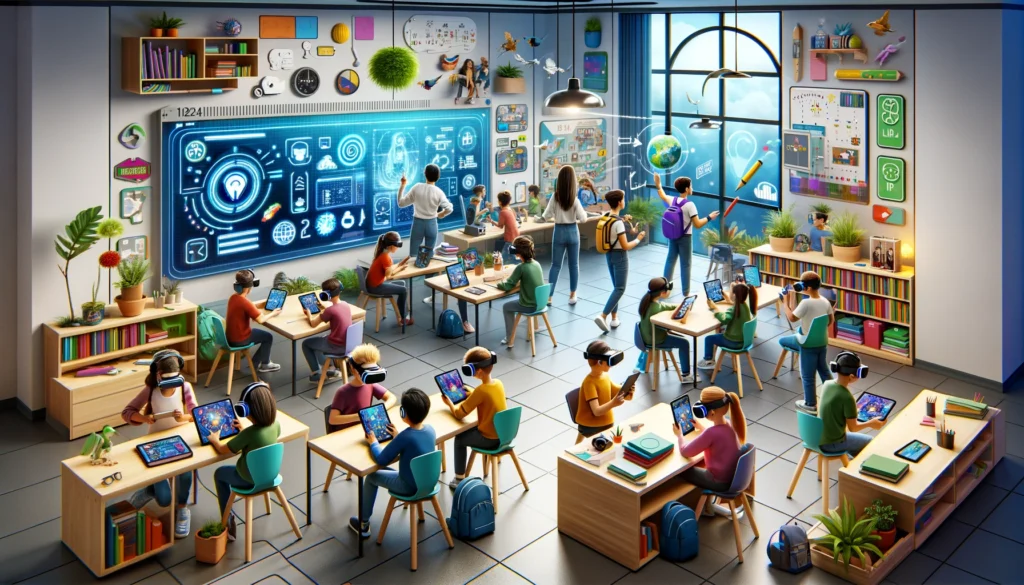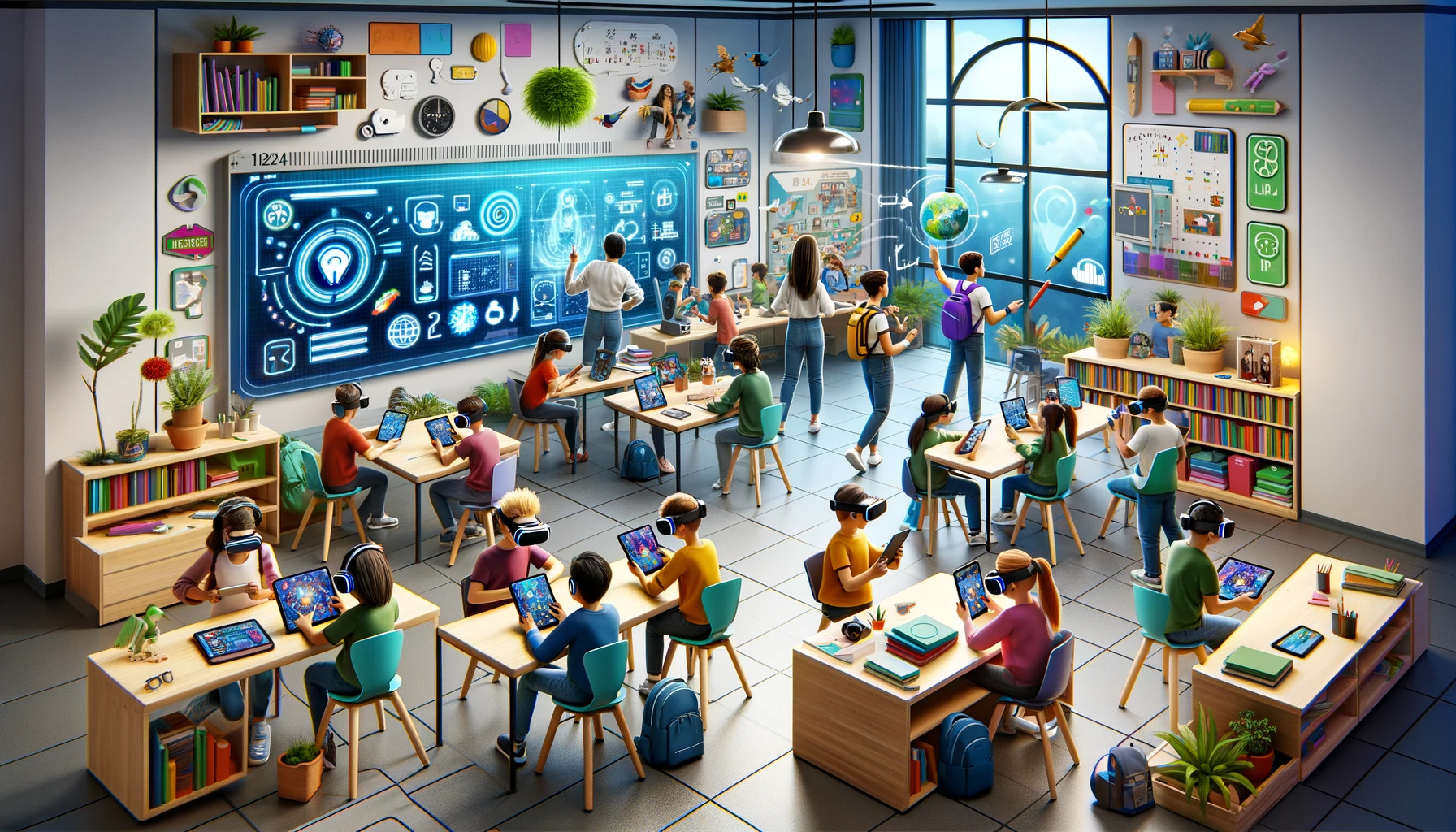Education is undergoing a rapid transformation.
Reflecting on the educational landscape of a decade ago, one can observe substantial changes influenced by technology, innovative teaching methods, and evolving understandings of how learning occurs.
As we advance into 2024, it is crucial to examine the emerging trends poised to shape the future of education.
These developments promise to make learning more engaging and effective for all.
1. Technology in the Classroom
The integration of technology is one of the most significant changes in education.
Classrooms are increasingly equipped with tablets, computers, and interactive whiteboards. These tools enhance engagement and interactivity.
For instance, students can embark on virtual field trips to historical sites or explore oceanic depths without leaving the classroom, thus making learning more captivating and aiding in better comprehension of subjects.
2. Personalized Learning
Acknowledging that every student is unique, personalized learning tailors education to individual needs.
Unlike the traditional model where all students learn the same material simultaneously, personalized learning allows students to progress at their own pace.
This approach benefits students by enabling them to focus on areas requiring improvement without feeling hurried.
Teachers leverage data and technology to understand each student’s strengths and weaknesses, crafting customized learning plans.
3. Gamification
Transforming learning into a game-like experience, gamification incorporates elements such as points, badges, and leaderboards into education.
This trend is gaining momentum as it makes learning enjoyable and competitive.

For example, students might earn points for completing homework or unlock new levels for excelling in tests, thereby increasing motivation and engagement.
4. Social-Emotional Learning (SEL)
Social-Emotional Learning (SEL) focuses on teaching skills like empathy, self-awareness, and decision-making, which are crucial for success both in school and life. Integrating SEL into curricula helps students improve academically and fosters better relationships with peers and teachers, contributing to a positive learning environment.
5. Remote and Hybrid Learning
The COVID-19 pandemic highlighted that education need not be confined to classrooms. Remote and hybrid learning models are gaining popularity.
In a hybrid model, students divide their time between home and school learning.
This flexibility benefits students with varying needs or those residing far from school. Technology plays a pivotal role, with tools like video conferencing and online assignments enhancing remote learning’s effectiveness.
6. Focus on STEM Education
STEM education, encompassing Science, Technology, Engineering, and Mathematics, is increasingly emphasized due to its importance in today’s world.
Schools are introducing STEM programs to promote critical thinking, problem-solving, and innovation.
Hands-on projects, such as building robots or conducting experiments, make these subjects more engaging.
7. Collaborative Learning
Collaborative learning involves students working together on projects, solving problems, or discussing topics, fostering teamwork skills.
This approach allows students to learn from one another, with teachers acting as facilitators. Collaborative learning prepares students for real-world scenarios where teamwork is essential.
8. Environmental Education
As climate change becomes a pressing global issue, environmental education is gaining importance.
Schools are teaching sustainability, conservation, and the impact of human activities on the planet through hands-on activities like tree planting, recycling projects, and energy-saving initiatives.
This education helps students become responsible global citizens.
9. Lifelong Learning
Recognizing that education extends beyond school years, the concept of lifelong learning is becoming more prominent.
Schools encourage students to develop a lifelong love for learning, adapting to new knowledge and skills throughout their lives.
This includes taking courses, attending workshops, or learning new hobbies as adults.
10. Artificial Intelligence (AI) in Education
AI is increasingly integrated into classrooms, aiding in personalized learning, grading, and providing feedback.
AI tutors assist students with difficult subjects, offering explanations and practice problems.
Additionally, AI helps teachers by handling routine tasks, allowing them more time for direct teaching and student interaction.
Top 5 Tips to Make Your Savings Work as Hard as Humanly Possible 2024
11. Global Learning
In a highly connected world, global learning is essential. This involves understanding different cultures, languages, and global issues.
Schools incorporate global learning through language classes, cultural exchange programs, and lessons on international topics, helping students develop a broader perspective.
12. Creative and Critical Thinking
Schools are emphasizing creative and critical thinking skills, encouraging students to think innovatively and solve problems. Activities such as brainstorming sessions, debates, and creative projects develop these skills, preparing students for future challenges.

13. Inclusive Education
Inclusive education aims to provide equal opportunities for all students, regardless of their background or abilities.
Schools adopt inclusive practices like differentiated instruction, catering to diverse student needs, and creating a supportive learning environment.
14. Mental Health Awareness
Recognizing the importance of mental health, schools are introducing programs to help students manage stress, anxiety, and other mental health issues.
Resources such as counseling services, mental health workshops, and relaxation spaces support students’ well-being and academic performance.
15. Virtual Reality (VR) and Augmented Reality (AR)
VR and AR technologies offer immersive learning experiences.
Students can virtually explore historical sites or study the solar system in 3D, making complex subjects easier to understand and more engaging.
As these technologies become more accessible, their use in classrooms is expected to increase.
16. Project-Based Learning
Project-Based Learning (PBL) involves students working on projects to learn.
These projects often address real-world problems, requiring critical thinking, creativity, and collaboration.
PBL makes learning meaningful and relevant to students’ lives, such as designing a sustainable city using knowledge from various subjects.
17. Coding and Digital Literacy
With the digital world becoming more pervasive, coding and digital literacy are essential skills.
Schools emphasize these areas to prepare students for future careers. Learning to code fosters problem-solving and logical thinking, while digital literacy includes safe and effective technology use.
18. Outdoor Learning
Outdoor learning, conducted outside traditional classrooms, enhances physical and mental health.
This approach can make lessons more dynamic and engaging, with subjects like science and geography benefiting from outdoor experiences, fostering a deeper connection with nature.
19. Flipped Classrooms
In flipped classrooms, traditional teaching methods are reversed. Students engage with lectures or materials at home and participate in interactive, hands-on learning in class.
This model promotes active learning and allows teachers to focus on challenging concepts and collaboration during class time.
20. Parent and Community Involvement
Education involves the entire community, not just the classroom.
Schools encourage greater involvement from parents and community members, who can assist with homework, share expertise, and participate in school events.
This involvement supports and motivates students, contributing to their success.
Mastering Time Management for Academic Success in 2024
Conclusion
The future of education is promising, filled with exciting possibilities.
Embracing technology, personalized learning, and fostering critical thinking and collaboration are making education more engaging and effective.
As we move into 2024, these trends will continue to shape learning and teaching, creating a better future for students.
By embracing these changes, we ensure education prepares students for today’s challenges and inspires them to achieve greatness.
Embracing the Future
As we look ahead, it is essential to remember that education encompasses more than grades and tests. It is about personal growth, skill development, and passion discovery.
The trends shaping education in 2024 aim to create an environment where every student can thrive, feel valued, and reach their full potential.
Let us embrace these changes with excitement and optimism, knowing that the future of education holds endless possibilities for success and fulfillment.
